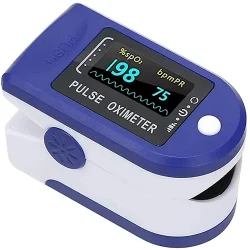Project Report For Pulse Oximeter
Introduction
Project Report For Pulse Oximeter is as follows.
A microarray is a tool used to study gene expression. The microarray is composed of a thin glass slide membrane that holds samples of numerous genes in a predictable order. Microarrays allow scientists to quickly and accurately examine expression (which genes are “on”). The approach is used to examine the genetic foundations of a variety of human illnesses as well as fundamental aspects of growth and development.
The microarray scanner or reader is the final stage before analysis. The device consists of a camera, a special microscope, and lasers. The scanner’s lasers excite the fluorescents connected to the DNA in the microarray. The camera and microscope work together to create a digital image of the array. The data is recorded on a computer, where an application is used to compute the red-to-green fluorescence ratio or to remove background information from each microarray location by inspecting the array’s digital image.
A crucial element of the microarray experiment is the microarray scanner. It is intended to recognise the signals produced by the molecules linked to it and transform them into digital signals for computer analysis. Confocal scanners and non-confocal scanners are the two primary categories of microarray scanners. Confocal scanners illuminate a tiny portion of the microarray at a time while scanning the microarray horizontally, line by line

Benefits Of Pulse Oximeter
Pulse oximetry is very useful for noninvasive continuous monitoring of blood oxygen saturation. Blood gas levels, on the other hand, must be tested in a laboratory using a taken blood sample. Pulse oximetry can be used in any scenario where a patient’s oxygenation is unstable, including critical care, operating rooms, recovery rooms, emergency rooms, and hospital wards, as well as for unpressurized aircraft pilots, for measuring any patient’s oxygenation and determining the efficacy or necessity for supplementary oxygen. Although a pulse oximeter can measure oxygenation, it cannot identify oxygen metabolism or the quantity of oxygen consumed by a patient. Carbon dioxide (CO2) levels must also be measured for this reason.
It is likely that it can also be utilised to identify ventilation anomalies. However, the use of a pulse oximeter to identify hypoventilation is hampered by the use of supplementary oxygen, because problems in respiratory function can only be recognised accurately when patients breathe room air. As a result, supplementary oxygen may be unnecessary if the patient can maintain enough oxygenation in room air, as it can result in hypoventilation going unnoticed.
Get Completely Custom Bankable Project Report
Market Potential of Pulse Oximeter
The worldwide pulse oximeter market is estimated to develop at a compound annual growth rate (CAGR) of 6.4% from 2023 to 2030, with a value of USD 2.4 billion in 2022.
The pulse oximeter market is driven by technological advancements in small and compact devices and continuous improvement in new features. In chronic obstructive pulmonary disease, pulse oximeters are used as constant monitoring devices at home and in hospitals to monitor systemic oxygen saturation and maintain lung health.
Furthermore, increasing air pollution and declining sustainable development are major factors in the prevalence of chronic respiratory diseases. Patient respiratory disorder severity can be easily monitored with a pulse oximeter, which also boosts the growth of the pulse oximeter market. The increased prevalence of respiratory disorders is driving up demand for pulse oximeters, which is fueling market expansion.
Several hospitals, at-home patients, and geriatric care centres emphasise blood oxygen level monitoring to assess the patient’s recovery progress. Technological advances in oxygen and spO2 monitoring systems have boosted the dependability and life expectancy of patients with respiratory diseases. The growing number of COVID-19 patients has boosted the pulse oximeter market demand.
Market participants are concentrating on boosting production to fulfil the growing demand for respiratory monitoring devices such as pulse oximeters. The market saw a rise in demand for these devices during the first quarter of 2020 as a result of revised regulatory constraints, standard operating protocols, and incorporating social distance rules, among other factors that boosted market growth.
One of the best instances of product acceptance is the widespread use of fingertip pulse oximeters in practically every healthcare facility. Increased COVID-19 patients have led to a fast rise in pulse oximeter readings due to low oxygen levels in the blood, resulting in severe conditions in critical situations.

